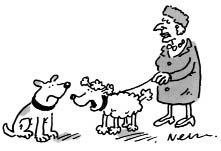Kabul
Every morning, on Kandahar Air Field, the British, US, Canadian and Dutch troops like to start the day with a cappuccino from Green Beans, the US army’s answer to Starbucks. But a few weeks ago the soldiers had a nasty shock: a sign on the Green Beans door saying there would be no frothy coffee for the lads because of a ‘supply problem’ in Pakistan.
War is hell, isn’t it? But the sign wasn’t just bad news for coffee-loving squaddies, it also revealed the Achilles’ heel for the entire international mission in Afghanistan: Nato’s supply roots, which are being steadily throttled by the Taleban.
Politicians and generals can discuss strategy until they’re blue in the face, but absolutely nothing can be achieved if the supply lines collapse. Nearly all the food and all important fuel required by the 80,000 foreign troops in Afghanistan has to be trucked in through Pakistan’s troubled border region, into Afghanistan’s equally restive southern provinces. And since the summer the Taleban has been using its hold in these semi-autonomous tribal areas of Pakistan to wreak havoc by blowing up roads, bridges and the fuel trucks which can be destroyed with just a well-aimed rocket-propelled grenade (RPG).
The private logistics contractors employed to move all this gear have become used to having their convoys shot up on an almost daily basis, and the Taleban are growing bolder by the month. A particularly embarrassing moment for Nato came in November when video footage was released of bearded militants driving around in brand-new armoured Humvees which had, quite literally, fallen off the back of a lorry trundling through the Khyber Pass — the famous gap in the mountains bordering Afghanistan which has served as an invasion route for millennia.








Comments
Join the debate for just £1 a month
Be part of the conversation with other Spectator readers by getting your first three months for £3.
UNLOCK ACCESS Just £1 a monthAlready a subscriber? Log in